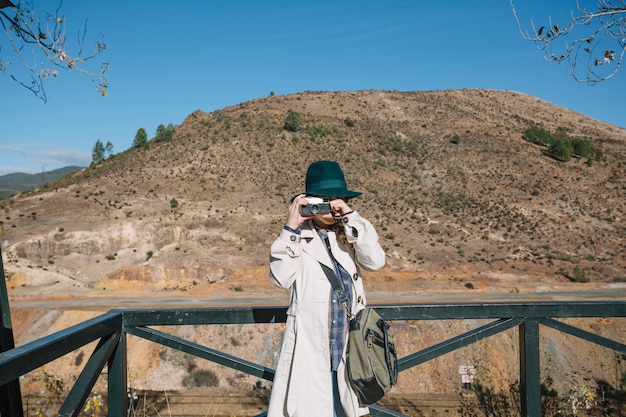
Oman, bordering the United Arab Emirates and boasting luxury hotels comparable to those in Dubai, remains a quiet enigma in the shadow of its more flamboyant neighbors. Muscat, the capital, serves as the gateway to Oman’s natural wonders, including its desert landscapes and towering mountain ranges, home to the Bedu people who have adapted to the harsh desert conditions.
Most visitors to Oman arrive in Muscat, a city that doesn’t try to emulate the high-rise glamour of Dubai or other Gulf cities. Instead, Muscat is a collection of old fishing villages and ports along the Gulf of Oman coastline. Among the modern buildings, you can still find traces of Portuguese and Asian influences in the older architecture, reflecting a time when the city was contested by foreign powers.
Jebel Akhdar, meaning Green Mountains, offers a refreshing escape from the desert heat. Rising to 3,075 meters at its highest peak, Jebel Shams, the climate here is similar to the Mediterranean. The terraces are used to grow fruits like peaches, which wouldn’t survive in the lower, hotter regions.
Jebel Akhdar separates the farmland stretching to the coast and Muscat from Oman’s Empty Quarter. This strategic vantage point is home to thousand-year-old forts and other UNESCO World Heritage sites, many of which have been restored and reopened by Sultan Qaboos. Notable sites include the fort at Bahla and Jabrin Fort, known for its brightly painted and intricately carved cedar wood ceiling.
Walking trails crisscross the mountains, with one of the most rewarding being the trek to the abandoned village of Wadi Ghul, located below the rim of Oman’s Grand Canyon. The Saiq Plateau, the central formation of the mountains, features terraced hillsides where orchards grow fruit and almonds, and rose gardens bloom in summer. Local farmers press and filter the petals into rose water, and visitors can watch this process at a local distillery.
The Alila Jabal Akhdar Resort, perched dramatically overlooking a gorge, offers an elegant mountaintop retreat and a base for exploring local trails. All rooms have panoramic views, but the outdoor infinity pool is perhaps the best spot for admiring the scenery.
Every Friday, farmers and their livestock descend from the Jebel Akhdar mountains to trade at the Nizwa Livestock Market. In Nizwa’s main square, you can observe this vibrant aspect of daily life for the Bedu, the traditionally nomadic people of Arabia’s deserts. Both men and women participate in the haggling, with men wearing long white robes (dish dash) and women in bright clothes and intricate face veils.
Nizwa, a two-hour drive southwest of Muscat, was Oman’s capital in the 6th and 7th centuries. Its deep Islamic traditions are evident in its many mosques, and the 40-meter tower of the 17th-century Nizwa Fort is a prominent feature. Nizwa is also a bustling trading hub, with a souq where you can buy antiques, spices, crafts, and goods from silversmiths, potters, and jewelers.
Close to central Nizwa, The Falaj Daris offers two swimming pools in landscaped gardens and an outdoor barbecue area. While it’s the only hotel in town, The Golden Tulip, a 15-20 minute drive away, provides a fantastic view of the mountains. Built in traditional Omani architectural style, all rooms overlook the swimming pool with the Hajar mountain range in the background.
For those seeking solitude, the Wahiba desert’s golden sands, not far from Nizwa and a four-hour drive from Muscat, are largely untouched except for the Bedouin tribes who live around its southern edge. Sunset in the desert is magical, with the dunes shifting through honey-colored hues to deep crimson before night falls.
Camping under the desert sky offers a taste of Bedouin hospitality. The Desert Nights Camp provides air-conditioned tents with private bathrooms, bedrooms, and lounges, along with activities like camel rides and quad biking. The camp is nestled between two high sand dunes but is easily accessible from the main road.
The Wahiba Sands’ dunes, believed to be around 6,000 years old, reach up to 80 meters high. The fine-grained sand, constantly moved by the wind, creates a dynamic habitat for about 150 plant species and 200 animal species, including desert foxes and the white-tailed mongoose.
On Oman’s coast, the Ras Al Jinz Scientific and Visitors’ Centre is a convenient stop between the Wahiba Sands and Muscat. This small cove, the Arabian Peninsula’s most easterly point, is a nesting ground for green turtles, which come ashore year-round to lay their eggs. The peak nesting season is between July and September, coinciding with Oman’s hottest weather.
Green turtles, the largest of all hard-shelled turtles, lay between 100 and 200 eggs each. Watching the hatchlings struggle to reach the ocean is a poignant experience, especially knowing that only 0.01% will survive to adulthood. The centre focuses on conservation, discouraging any handling of the turtles. Accommodation at the Carapace Lodge, part of the centre, is basic but practical for those wanting to be close to the turtles and the beach.
With year-round sunshine, Oman offers renowned Arabian hospitality, traditional culture, and unspoiled natural beauty. From Muscat’s spectacular coastline to the rugged interior mountain ranges, Oman is a destination waiting to be explored.